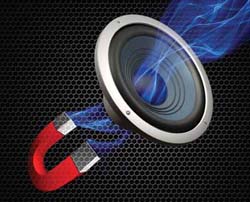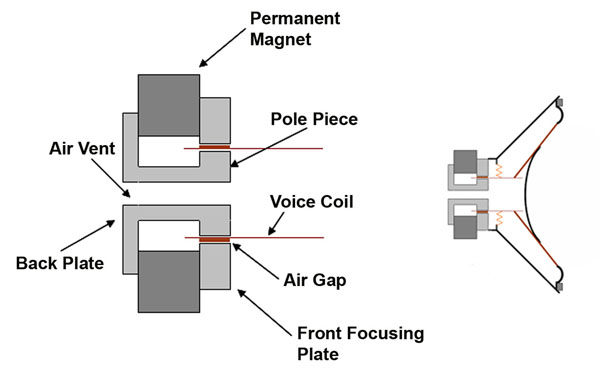
Alternative Approaches
As a frame of reference, Mark Gander, vice president of JBL Professional, notes that that a typical 12-inch cone driver and a 1.4-inch compression driver each require about one-half pound of neodymium.
While that might seem only a small amount (to produce big results), still, the consumption of neo, when spread over the many different sizes and types of drivers used in today’s professional sound systems, adds up quickly.
A single, large-scale tour could account for as much as half-ton of neo usage.
In the meantime, some in pro audio are hedging their bets by re-visiting other magnetic materials.
“Like all loudspeaker manufacturers worldwide, we’ve been wrestling with the tremendous price rise of neodymium magnets over the past year and a half,” notes Mark Gander, vice president of marketing at JBL. “We’ve seen our magnet prices go up an average of five to six times [from] a year or so ago. The new paradigm forced a re-evaluation of the neodymium value proposition and inspired a deep dive into a holistic approach to the creation of new products.
”Necessity is the mother of invention, and we’ve been asking new questions about real world applications,” he continues. “The answers have taken us down some new paths and we’ve been pleasantly surprised with the fruits of our labor.”
Earlier this year, Italy-based driver designer and manufacturer FaitalPRO introduced several new families of loudspeaker drivers with ferrite magnet structures. This effort includes more than 30 new products in every category from low- to mid- to high-frequency units.

FaitalPRO indicates that the decision to create the new product lines is tied both to market demands, which sometimes specifically require products with ferrite magnets, as well as expanding the product catalog with units offering a new tonality. Further, the company stresses that it is not replacing any of its current neodymium models.
“It’s not a secret that the cost of neodymium is currently at a record high, and therefore the market will certainly welcome our new ferrite loudspeakers. But it surely will not do so just for a matter of cost,” states FaitalPRO overseas sales manager Flavio Naggi. “We’re offering an alternative based on new, soft and refined acoustic tonalities; the current product range will remain, and the new families with a ferrite heart will join them.”
Another leading driver company, Acoustica Beyma, headquartered in Spain, has also been at work devising alternatives. Pedro Enguidanos of Beyma notes that one area of focus has been developing enhanced coil cooling, which has allowed the use of smaller coils, while also fostering ferrite-based designs.
Crystal Ball
Will neo continue to reign supreme as the magnetic material of choice for premium-grade pro audio loudspeakers? Or will the high present day cost force its usage into a rarefied product strata where price is no issue? Only time will tell, particularly if alternative production sources for neo begin to provide significant yields, which would likely bring prices down.
As we’ve discovered, driver manufacturers are working diligently to develop alternate ways and means of providing their customers with high-performance products at a more reasonable price.
And perhaps a new magnetic alloy will be discovered, just as neodymium was discovered in 1885 by Austrian chemist Carl Auer von Welsbach. As Gander noted earlier, “Necessity is the mother of invention.”
So the next time you rig that large line array system in an arena – or when you’re placing that small, lightweight loudspeaker on a stand at a club – keep in mind the complex supply chain and multifaceted international political issues that actually dictate vital factors such as price and performance in our own little corner of the global economy.
Ken DeLoria is senior technical editor for ProSoundWeb and Live Sound International and has had a diverse career in pro audio over more than 30 years, including being the founder and owner of Apogee Sound.
